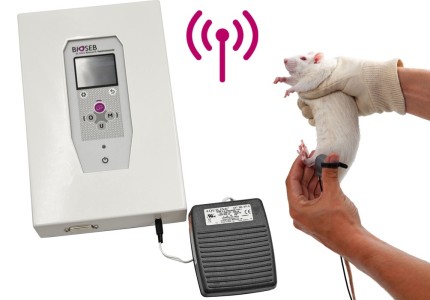Authors
M Li, W Xie, M He, etal
Lab
National Clinical Research Center for Geriatric Disorders, Xiangya Hospital, Central South University, Changsha, China
Journal
BioMed Research International
Abstract
Background. The subchondral bone parallels with the progression of osteoarthritis (OA). However, the biomechanical properties and histopathological changes of subchondral bone changes in the lumbar facet joint (LFJ) after long-term axial loading on the spine have not been explored. In this study, we aimed to investigate the subchondral bone histopathological changes that occur in the LFJ and pain behaviors in a novel bipedal standing mouse model.
Methods. Sixteen 8-week-old male C57BL/6 mice were randomly assigned into bipedal standing and control groups. A finite element stimulate model based on the micro-CT data was generated to simulate the von Mises stress distribution on the LFJ during different positions. The spine pain behaviors tests were analysis. In addition, the change in the subchondral bone of the LFJ was assessed by histological and immunohistochemistry staining.
Results. The computerized simulation of the von Mises stress distribution in the superior articular process of LFJ at the spine level 5 in the lying position increased and reached a maximum value at the bipedal standing posture. The spine pain behavior test revealed that the threshold of pressure tolerance decreased significantly in bipedal groups relative to control groups, whereas the mechanical hyperalgesia of the hind paw increased significantly in bipedal groups relative to control groups. The axial load accelerates LFJ degeneration with increased histological scores in bipedal groups. The expression of type II collagen and aggrecan (ACAN) was significantly decreased in the bipedal groups compared with the control groups, whereas the expression of MMP13 was increased. Compared with the control groups, the osteoclast activity was activated with higher TRAP-positive staining and associated with increased CD-31-positive vessels and GCRP-positive nerve ending expression in the subchondral bone of LFJ.
Conclusion. Collectively, long-term axial loading induces the development of spine hyperalgesia in mice associate with increased osteoclast activity and aberrant angiogenesis and nerve invasion into the subchondral bone of LFJ that stimulates the natural pathological change in human LFJ OA. These results indicate that aberrant bone remodeling associate with aberrant nerve innervation in the subchondral bone has a potential as a therapeutic target in LFJ OA pain.
BIOSEB Instruments Used
SMALGO: SMall animal ALGOmeter (BIO-SMALGO)
Source :

 Pain - Thermal Allodynia / Hyperalgesia
Pain - Thermal Allodynia / Hyperalgesia Pain - Spontaneous Pain - Postural Deficit
Pain - Spontaneous Pain - Postural Deficit Pain - Mechanical Allodynia / Hyperalgesia
Pain - Mechanical Allodynia / Hyperalgesia Learning/Memory - Attention - Addiction
Learning/Memory - Attention - Addiction Physiology & Respiratory Research
Physiology & Respiratory Research











![Dynamic Weight Bearing 2.0 – Postural Module [Add-on]](https://bioseb.com/733-home_default/dynamic-weight-bearing-20-add-on-postural-module.jpg)
























 Pain
Pain Central Nervous System (CNS)
Central Nervous System (CNS) Neurodegeneration
Neurodegeneration Sensory system
Sensory system Motor control
Motor control Mood Disorders
Mood Disorders Other disorders
Other disorders Muscular system
Muscular system Joints
Joints Metabolism
Metabolism Cross-disciplinary subjects
Cross-disciplinary subjects CONFERENCES & MEETINGS
CONFERENCES & MEETINGS 